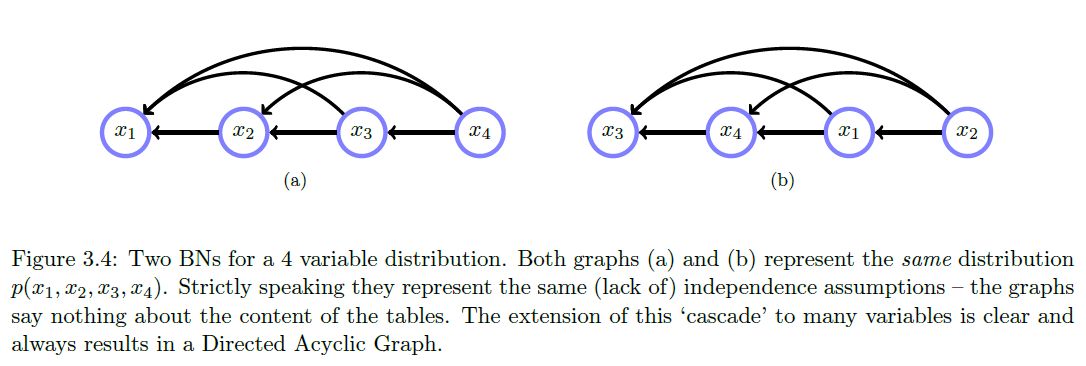Math and science::INF ML AI
Belief networks
A belief network (called a Bayesian network by Koller) is a grapical model that represents a distribution of the form\[ p(x_1, ..., x_D) = \prod_{i=1}^{D} p(x_i \vert pa(x_i)) \\\text{where } pa(x_i) \text{ represents the parental variables of variable } x_i\]
Parental variables is just a term for the variables that appear as conditional variables for a given variable.
A belief network represents a distribution as a directed graph where the \( i \)th node corresponds to the factor [...], with directed connections from all [...] nodes to the \( i \)th node.
According to the rules above, a distribution \( p(x_1, x_2, x_3, x_4) \), one with no independence statements, can be modelled with a cascade graph like so:

